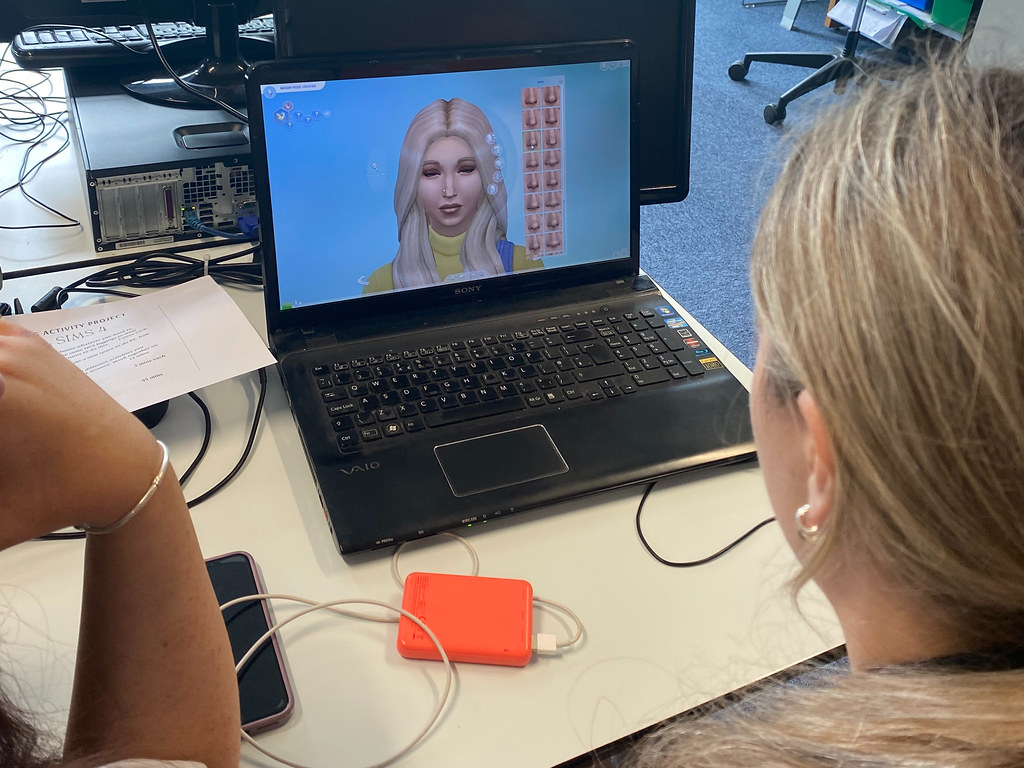Background
Zoe Jeffrey’s research focuses on how technology, such as virtual reality, can help solve lack of participation in sports and fitness. She is particularly interested in the gender gap in sports participation. Currently a PhD researcher, she has used participatory methods to explore girls’ disengagement in physical education at school.
Engagement Type - Listening
Public Group - Schools and young women (aged 12-16)
Engagement Method - Creative methods including photo stories, virtual reality and artworks
Themes - Creative methods
Project Team
Facts and Figures
Zoe worked with two local schools across three creative workshops which resulted in one of the schools changing their uniform policy.
Overview
I am using participatory research as part of my PhD to create solutions for girls inactivity in PE at school. I have worked with young women aged 12 – 16, and have involved them through co-creative and participatory research workshops.
Motivation for Engaging

For certain projects that are about trying to solve issues, like public health and physical activity, you have to involve the people who are affected in your research, because they are the ones that are experiencing it.
To involve children in design thinking is quite phenomenal; the kind of ideas they have had around their own experiences has blown me away. Using creative participatory methods has meant that I’ve allowed them to uncover how they feel about PE in the moment.
Engagement Approach
At the outset of my research I conducted a pilot study with 5 girls. We did some creative workshops online (because we were in lockdown at the time), which gave me a way of testing my methodology. This study informed the content for the co-creative workshops that would be my main method of data collection for my PhD.
I recruited two local schools to take part, and I held three workshops both at the schools and here at the University. I used creative methods to enable the girls to redesign physical education. They did artworks, and narrative photo stories, and then when they came to campus they redesigned their physical education worlds in a video game.
They redesigned their PE kit for avatars to wear in their virtual worlds. They also redesigned the spaces where they did PE at school.
It would have been a different study altogether if the girls hadn’t been involved. The theory I’m using is called Affect Theory. I look at the affects that come about when people are in relation to others, or in relation to the objects they use, and the environment they are in. For example, we looked at PE skirts; the girls explored them from the point of view of their peers and the teachers and the general public. We found that all these viewpoints and experiences combined can sometimes cause girls not to engage in PE because these affects are too intense.
I very quickly found that even if the girls liked PE, there were plenty of affects that hindered their ability to take part.
Outcomes

The girls have said that they want to have workshops like this in school. They have loved being able to get together, talk openly to each other, and have debates about the issues that are governing them in school. They felt like they were valued, that they had a voice, that they were acknowledged and that somebody was listening to their point of view.
One of the schools has decided to change its policy on uniform, and is now allowing girls to wear cycling shorts for PE.
Top Tips
My top tip is to plan, plan, plan and plan! Plan what you want to do, then have a Plan B that you can fall back on if something goes wrong. And maybe even have a plan C as well.
When you’re using participatory methods you may have to adapt your plans to suit your partner’s needs. You also have to incorporate feedback from the ethics approval process into your plans. Sometimes you can end up having to change and adapt your original ideas.
